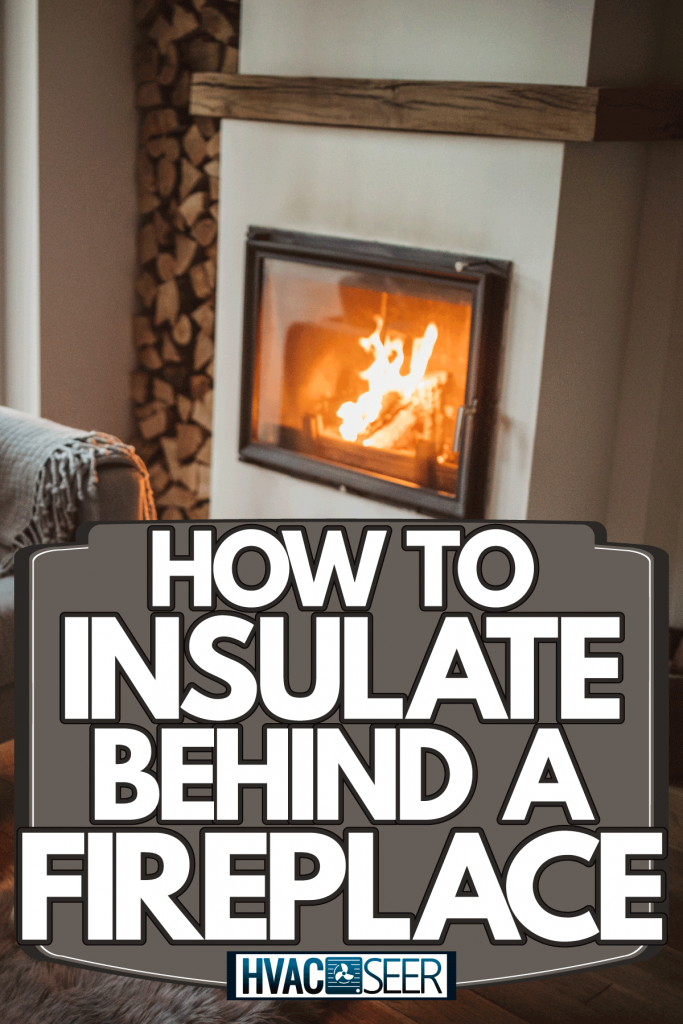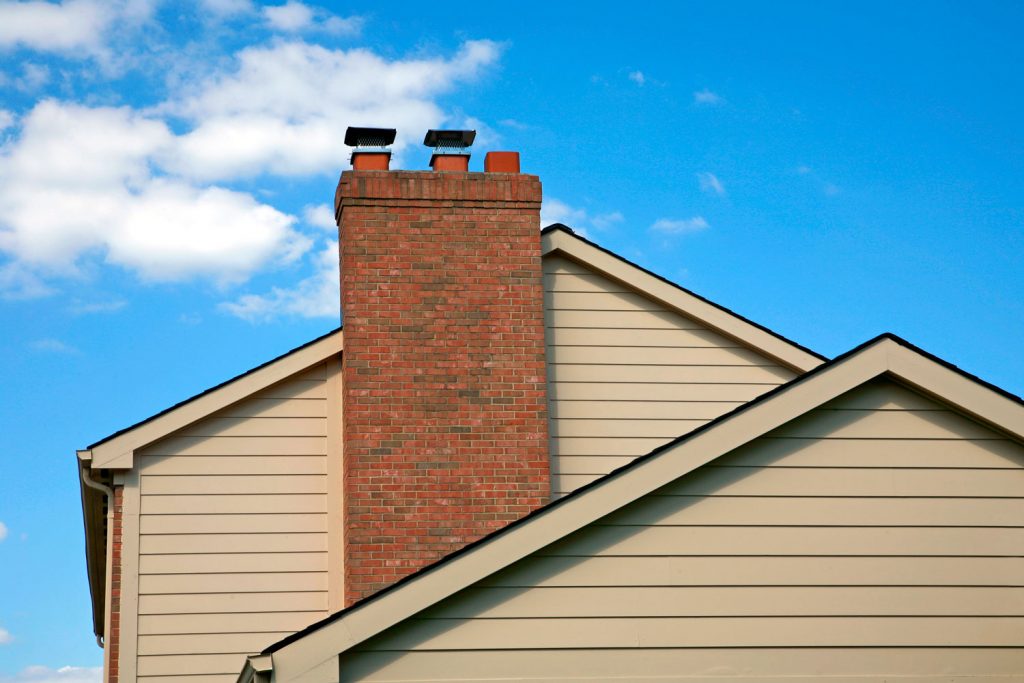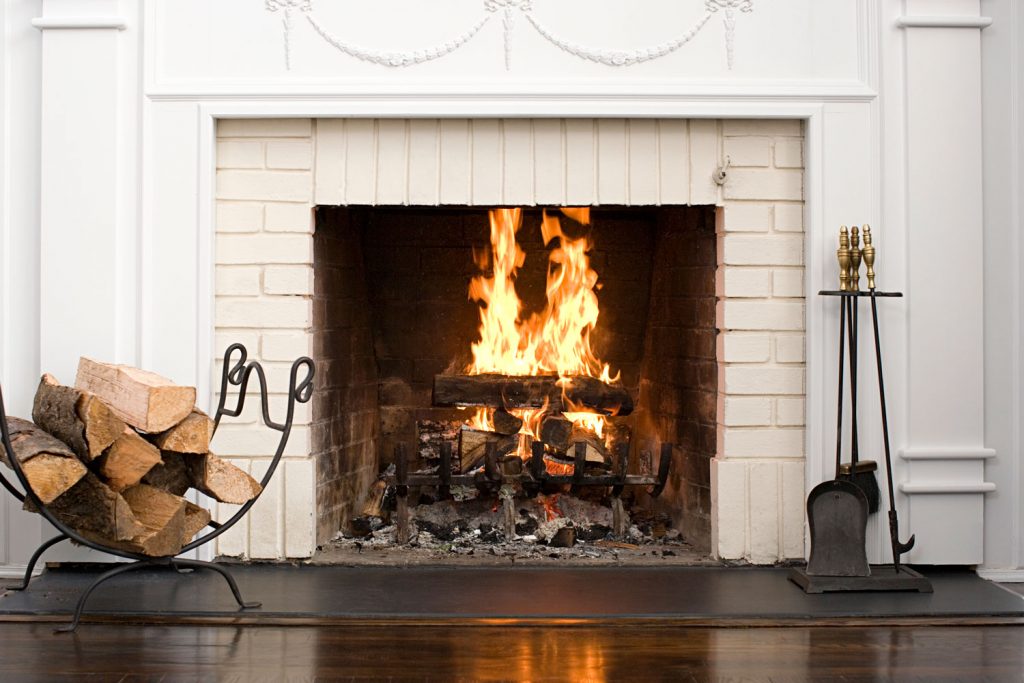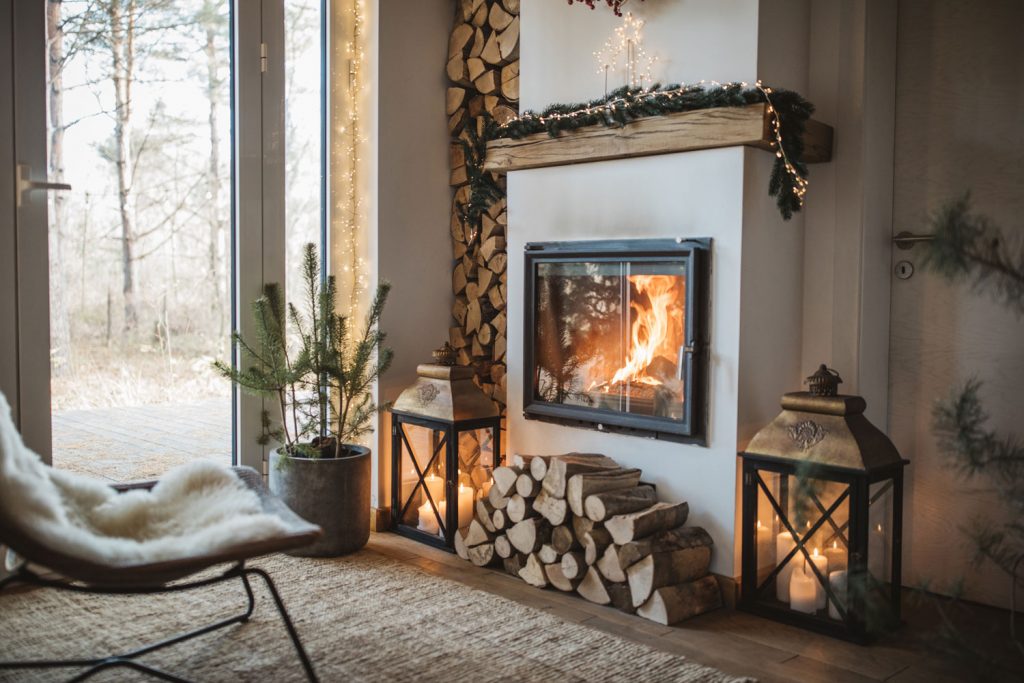A fireplace that is properly insulated can be imperative to preventing heat loss during the winter months. However, the insulation must be installed correctly, as improperly installed insulation can lead to moisture issues and mold spores. We researched the best way to insulate behind your fireplace, and in this post, we will go over it.
Insulating your fireplace is crucial to preventing cold air from finding its way down the chimney. Cold air can lead to excessive moisture and, as a result, mold growth. However, it's equally important to use the proper insulation and follow the fireplace manufacturer's guidelines when performing this project.
Follow these steps to insulate behind a fireplace:
- Gather all of the appropriate measurements.
- Install batt insulation.
- Install the drywall.
- Apply caulk to the drywall.
There are several types of insulation that are fire-retardent, and the best one to use will depend on the type of fireplace and space you have. Continue reading to learn about the best types of insulation for this task.

Steps To Insulate Behind A Fireplace
Things you'll need:
- Batt insulation
- Silicone caulk
- Spray foam
- Caulk gun
- Construction stapler
- 2-inc screws
- Circular saw
- High-temperature caulk
- Screw gun
- 5-6 2x4s (plywood preferably)
1. Gather all of the appropriate measurements
First, take measurements of the fireplace vent shaft and the chase. You'll need this measurement to determine exactly how many pieces and the sizes of plywood that you'll need to cut. The plywood should fit the measurements on the outside of the fireplace chase. If the pieces are too narrow, attach other cut pieces to get the proper width.
So you need to screw the pieces together using the 2-inch screws, making sure that there are no gaps between them. Then caulk the seams of the plywood pieces together. Next, install insulation beneath the chase and secure it with the staple gun.
You also need to install a piece of plywood beneath the chase, which you can attach using the 2-inch screws. Afterward, apply caulk to the seams around the plywood and the bottom of the chase.
2. Install batt insulation
Now it's time to install the insulation between the studs in the back of the fireplace chase. The studs will go behind the fireplace but before the drywall. Secure the insulation in place using your staple gun. Make sure that the paper (or foil) side of the insulation faces the inside of the chase.
3. Install the drywall
Next, measure and cut your drywall pieces and install them first. You also want to ensure that you complete the electric and gas line installation before installing the drywall and fireplace. Secure the drywall using drywall screws or another appropriate fastener. Also, measure holes for the gas and electric lines or any other gaps as necessary.
4. Apply caulk to the drywall
Next, caulk the seams between the drywall, making sure to caulk around the top and bottom areas as well. Apply the high-temperature caulk to the areas around the wall thimbles. Lastly, once you or a professional install the gas and electric lines, apply a flame-retardant insulating foam to seal the space around them.
What insulation is fireproof?

There are several types of insulation that are fireproof. Let's take a closer look at the various types:
Foam Insulation
Foam insulation is derived from polymers and low-density plastics. You'll usually find that it's used in homes or buildings with irregular surfaces or areas with a large vertical overhead. There are many different types of foam insulation, many of which are fire-resistant. However, some are made specifically to provide a thermal barrier for fire resistance.
Fiberglass Batts
You shouldn't use fiberglass insulation at temperatures above 200 degrees. While this installation itself is not fireproof, it is often made to be fire-resistant. To do this, manufacturers spray the insulation with treatments and various fiber retardant chemicals to make it fireproof.
However, sometimes the foil or paper facing on the fiberglass batts can be very combustible. So if you need to install code-safe insulation in your home, you may want to take a close look at the product label.
Mineral Wool and Glass Insulation
Mineral wool insulation is made from recycled iron are natural rocks. This insulation is naturally non-combustible and has a high melting temperature. Recycled glass and fused sand go into making Glass wool insulation - allowing it to also work as a non-combustible insulator. Producers can also spray both types of insulation with fire-resistant chemicals during manufacturing.
You can easily install mineral wool and glass insulation by cutting the rolls to the appropriate size to fit your space. Remember always to take measures to wear a ventilator mask and protective clothing when installing both types of insulation, as they can present health hazards.
Fibrous Mat Insulation
This type of insulation is made from various minerals, which are also known as polycrystalline and silica fibers. It is heat-resistant and does not conduct electricity—making it perfect for fireproof installation.
The insulation is also common on automotive vehicles and motorcycles, where its high-temperature resistance is necessary. You can find this insulation in batts, as well as foam and cellulose form.
Foam and Cellulose Insulation
Cellulose insulation typically has various fire-resistant chemical treatments to improve its fire resistance, as the cellulose itself is not fire-resistant. Polyurethane and polyisocyanurates are the main ingredients of foam insulation.
It's much less combustible than cellulose, though it can still ignite at very high temperatures. Both types of insulation are made to be flame retardant and can be used in homes or buildings where fire-resistance insulation is required.
Do you Lose Heat Through your Chimney?

Yes. You can lose heat through your chimney via the damper. In fact, most of the heat from an open wood-burning fireplace is lost through the chimney. The best way to lessen the amount of heat loss from the chimney is to use a sealed or closed damper and to ensure that your home is well-insulated.
Can Cold Air Come Down a Chimney?
Yes. However, this is usually the result of a chimney that is the incorrect size. So if you notice any burst of outside air or sudden cold drafts coming down through your chimney you'll want to have a chimney inspection by a professional chimney technician. Additionally, there are some ways to prevent cold air drafts in your chimney. Let's look at how.
Install a chimney damper
Chimney dampers are in the chimney flue and help to control the ventilation within the chimney. They attach to the chimney by a chain that you can use to open and close them. This is typically the first line of defense in preventing cold drafts from finding their way down the chimney.
They range in price from $65-$380 or more, and installation takes an hour or two. Dampers are also perfect for preventing animals and debris from entering your home through the chimney.
Learn more about this chimney damper on Amazon.
Use a fireplace door
A fireplace door can be an essential fireplace accessory. They are especially beneficial in blocking cold air and preventing it from entering the room where the fireplace is located. In addition to this, they also add a level of safety and protection by preventing sparks and wood debris from shooting outside of the fireplace and into your home.
Install a chimney pillow or balloon
Chimney balloons and pillows are devices that you can insert inside the chimney to block cold air. As these special devices prevent the air from traveling down the chimney, they also prevent the warm air inside your home from escaping up through the chimney. Pillows and balloons are ideal for drafty chimneys, especially in homes where the inhabitants don't frequently use the fireplace.
Find this chimney draft stopper on Amazon.
Seal the chimney completely
And lastly, you can also seal the chimney permanently. This is usually the last resort for many homeowners. However, it is very effective in preventing cold drafts from trailing down your chimney. Before deciding to seal the chimney, it's best to contact a chimney technician to determine what your home requires explicitly.
A poorly sealed chimney can easily lead to water leaks, ultimately damaging the interior of your home and the chimney. It's worth noting that sealing the chimney can also impact the value of your home.
Wrapping Things Up

Whether you use your fireplace frequently or infrequently, having the proper insulation behind it is crucial. And remember that most insulation materials are made to be fire retardant; however, they do come with different levels of fire resistance. So to say, it's best to be thorough when shopping for the best insulation products for your fireplace.
Before you go, be sure to check out some of our other posts:


